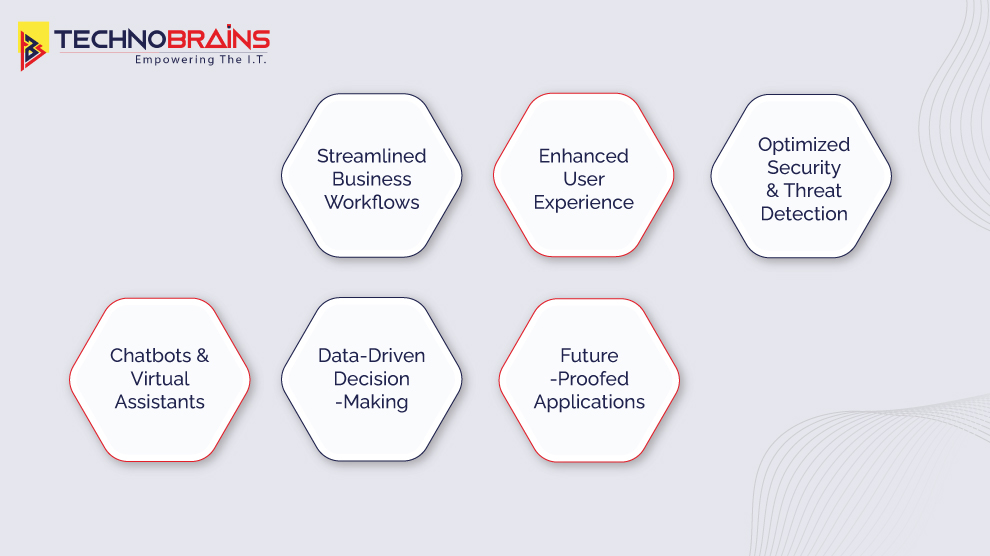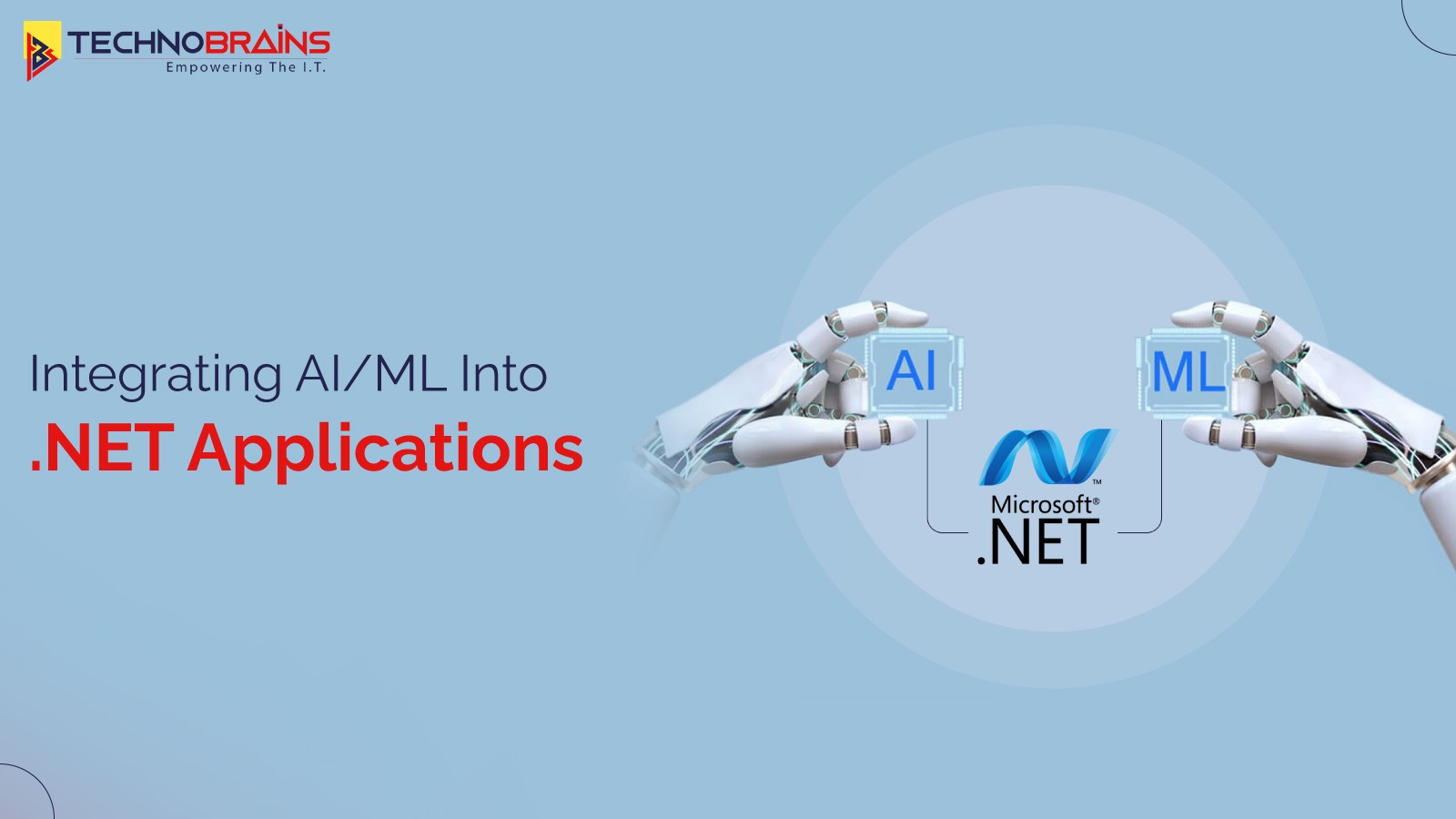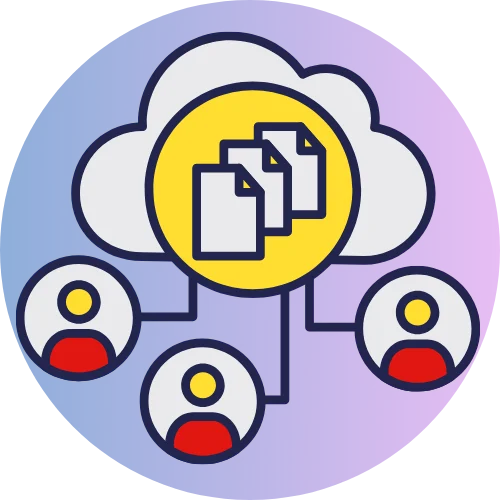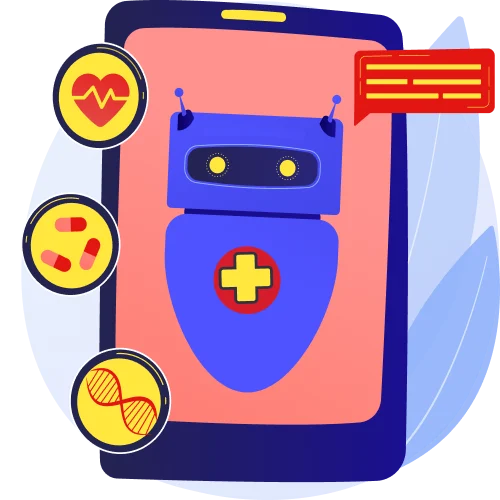Microsoft’s .NET framework has long been a dependable, go-to solution for businesses across the world for all of their software development needs. However, they are finding it tough to stay ahead of the competition owing to the consistent evolution in technology and shifting market demands. So they turn to Artificial Intelligence (AI) and Machine Learning (ML)—two concepts gaining popularity and widespread use—to tackle this challenge and keep up.
Forbes projects that the global AI market’s size will grow at a CAGR of 37.3% from 2023 to 2030. This is just a glimpse into the increasing prevalence of both technologies. With this booming trend, it is no doubt a prerequisite for businesses to adapt to this development and integrate AI and ML with their software solutions.
This goal is made easily attainable with .NET, which has introduced development technologies specifically intended for this task. Technologies such as ML.NET, TensorFlow.NET, CNTK, and PyTorch, all facilitate seamless integration of AI and ML capabilities into .NET applications, giving developers the means to build intelligent and adaptable software solutions.
Curious about incorporating AI and ML models into your .NET applications? This article aims to address this query by exploring this trend in .NET development, focused on the integration of AI/ML with .NET applications. We will look at the benefits of this integration and provide insights into how you can implement these advancements in your business software.
Importance of Integrating AI/ML with .NET Applications

The integration of AI/ML solutions into your .NET applications is necessary for several reasons. Here’s why:
1. Streamlined Business Workflows
Machine learning models can automate repetitive, tedious tasks like data entry and analysis, freeing up your team members to focus solely on your business objectives. Integrating an AI/ML model into your .NET application also enables predictive maintenance capabilities, which leads to more efficient resource allocation and minimizes expenses and disruptions typically associated with maintenance.
2. Enhanced User Experience
AI/ML-powered .NET software solutions have the capacity to tailor user interfaces and experiences according to individual users. By interacting with your end-users, these models will mold the interface and overall appearance to their preferences, leading to higher engagement and user satisfaction.
3. Optimized Security & Threat Detection
AI and ML models are trained to pinpoint and catch up on even the barely perceptible presence of a cyber threat. They can analyze large amounts of data sets and user activity to identify suspicious patterns and potential threats before they cause adverse damage to the application and your business, leading to enhanced security and the detection of threats.
4. Chatbots & Virtual Assistants
Chatbots and virtual assistants customized to your business’s requirements can help you offer 24/7 interactive support to your intended audience. AI-powered chatbots can comprehend all of the questions of your clients and provide pertinent responses, improving the entire experience for customers.
5. Data-Driven Decision-Making
In an age where navigating the complexities of data is a necessity for any business, integrating AI/ML solutions into your software opens up new avenues for enhanced decision-making.
AI possesses the incredible ability to sort through voluminous amounts of data to uncover valuable trends and patterns. It can even empower you with predictive analytical capabilities, which will help you forecast future business outcomes with ease. By harnessing these capabilities, businesses can gain invaluable insights and opportunities to capitalize on, strengthening decision-making through AI-powered data management.
6. Future-Proofed Applications
Given the growth spurt the AI market is expected to experience in the coming years, it goes without saying that AI/ML integration is of prime importance. By infusing AI/ML into your .NET-based or any software solution, you are essentially preparing it for the future of software development, placing your software far ahead in the ever-evolving digital landscape.
Read also, Do You Need AI in Your .NET Application?
How to Integrate AI & ML Models with Your .NET Applications?

There is a high likelihood that, by now, you are probably interested in learning how to integrate these solutions into your software. Don’t worry; we’ll explain the process briefly. Here’s what it involves:
Determining the Use Case
The foremost step involves identifying what needs to be enhanced by integrating AI/ML. Consider your unique requirements, your objectives, and the outcomes you expect to see after the integration.
Select the Framework or Library
From the vast pool of frameworks and libraries, you must choose the best-suited one for you. Make your pick from .NET-powered technologies such as ML.NET, TensorFlow.NET, PyTorch, and the like.
Collect Your Data
Gather and prepare the data to be fed to the model. This would include gathering information from multiple sources and datasets and getting it ready to feed into the model. The data must be prepared in a way suitable for training.
Build & Train the Model
Decide upon the suitable algorithm your AI/ML model will make use of. Leveraging the capabilities of the chosen framework, commence developing and training the model with the accumulated data. Make sure you have your software application ready in the suitable phase.
Integrate the Model
The framework will provide you with APIs for easy integration with your software. Utilizing them, integrate the built AI or machine learning model into your .NET application and validate that it blends well with your application’s logic.
Application Testing & Deployment
Having embedded your model into the application, you must now conduct thorough tests and assessments to ensure that the model performs accurately. Roll out the application to your target audience, making it available for them to use.
Consistent Monitoring & Updates
After deployment, it is of vital importance to routinely monitor the performance of the model and make improvements when necessary. This entails retraining the model with new data to ensure it remains effective and adaptive to changes over time.
Read also, .NET 8 Features and Enhancements: Everything We Need To Know
Conclusion
The software development realm is developing at a remarkable pace. With .NET leading the way in innovation, there’s no doubt new trends in .NET development will continue to unfold and emerge. Adapting to such shifts in the terrain is a strategic step to place oneself ahead of the technological curve. The act of integrating AI and ML into your .NET applications is a similar endeavor that you can undertake that will prove advantageous for businesses and their consumers.
You might want to align yourself with this ground-breaking innovation as well after reading this blog. So, if you have a .NET application and want to embed the capabilities of AI and ML into it, then TechnoBrains will be your trusted partner. With our expertise in both .NET development and the implementation of AI/ML, we can surely help you out, as we have helped several clients over the years. Choose to hire .NET developers from us or our .NET development services, and let us help you bridge the digital gap with excellence.









